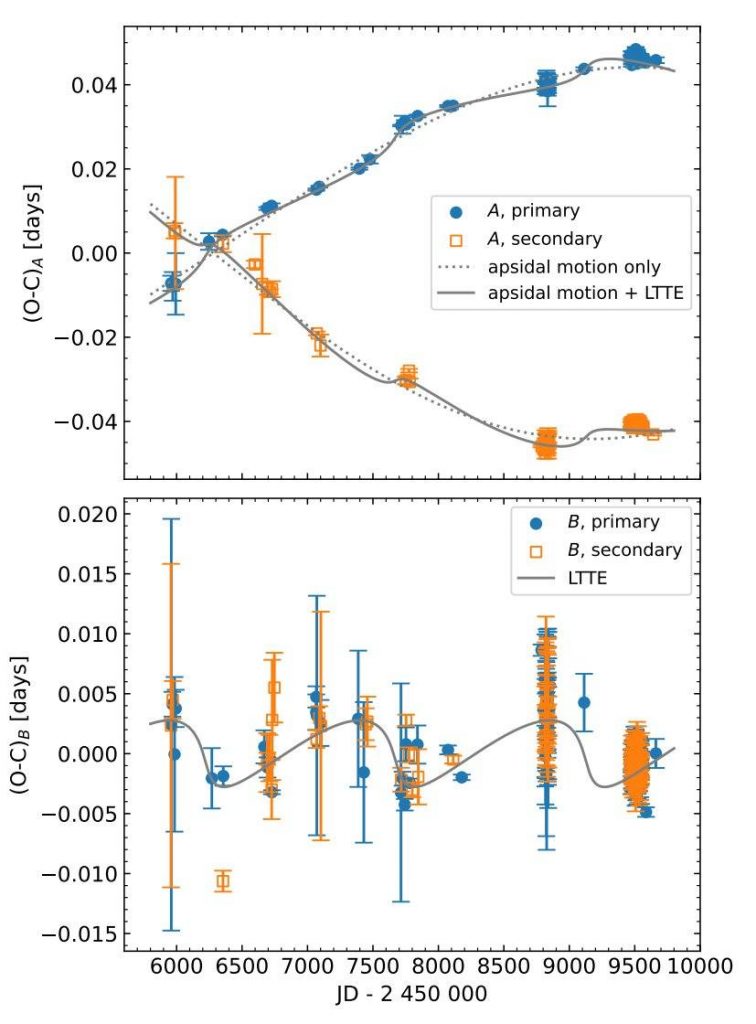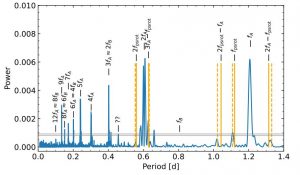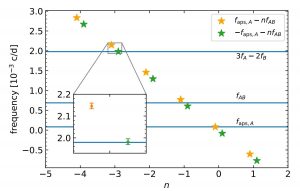
New paper on double eclipsing binary (2+2 quadruple) CzeV343 discovered and meticulously followed by Pavel Cagaš over the last 11 years (99 nights). Combining his data with TESS, including 2-min data from our GI proposal, and spectroscopy, we find a bunch of interesting things.
The weirdest thing is that the orbital periods of the two binaries are in 3:2 resonance and we find this resonance is exact to 1e-5 cycles/day when we take into account apsidal motion and mutual outer orbit, although with very puzzling sign change relative to theoretical work.
We characterize the mutual outer orbit with light-travel time effect. But the O-C amplitudes are so small that the outer orbit must be seen nearly face-on! Consequently, we constrain the relative inclinations of the inner and outer orbits to very high values near 90 degrees.
We find signal corresponding to pseudo-synchronous rotation of one of the binaries in TESS 2-min photometry. Since all of the stars are likely early type with radiative envelopes, this restricts any scenarios where the binary eccentricity was excited very recently.
Given this, the past of the system likely involved quadruple von Zeipel-Lidov-Kozai and high eccentricities. The future evolution might lead to mergers, double white dwarfs, triple common envelope, SN Ia, or mass-transfer induced dynamical instability (outer orbit is tight and eccentric).
The paper is submitted to A&A, check it out at https://arxiv.org/abs/2206.12456.



